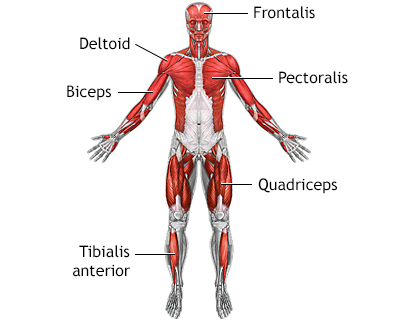Pregnancy SmartSiteTM
Neuromuscular disorder - myasthenia gravis DefinitionMyasthenia gravis is a neuromuscular disorder. Neuromuscular disorders involve the muscles and the nerves that control them. CausesMyasthenia gravis is an autoimmune disorder. An autoimmune disorder occurs when the immune system mistakenly attacks healthy tissue. Antibodies are proteins made by the body's immune system when it detects harmful substances. Antibodies may be produced when the immune system mistakenly considers healthy tissue to be a harmful substance, such as in the case of myasthenia gravis. In people with myasthenia gravis, the body produces antibodies that block the muscle cells from receiving messages (conveyed by neurotransmitters) from the nerve cells. In some cases, myasthenia gravis is linked to tumors of the thymus (an organ of the immune system). Myasthenia gravis can affect people at any age. It is most common in young women and older men. SymptomsMyasthenia gravis causes weakness of the voluntary muscles. These are muscles that you can control. Autonomic muscles of the heart and digestive tract are usually not affected. The muscle weakness of myasthenia gravis worsens with activity and improves with rest. This muscle weakness can lead to a variety of symptoms, including:
Exams and TestsYour health care provider will perform a physical exam. This includes a detailed nervous system (neurological) examination. This may show:
Tests that may be done include:
TreatmentThere is no known cure for myasthenia gravis. Treatment may allow you to have periods without any symptoms (remission). Lifestyle changes can often help you continue your daily activities. The following may be recommended:
Medicines that may be prescribed include:
Crisis situations (myasthenic crisis) are attacks of weakness of the breathing muscles. These attacks can occur without warning when either too much or too little medicine is taken. These attacks usually last no longer than a few weeks. You may need to be admitted to the hospital, where you may need breathing assistance with a ventilator. A procedure called plasmapheresis may also be used to help end the crisis. This procedure involves removing the clear part of the blood (plasma), which contains the antibodies. This may be replaced with donated plasma that is free of antibodies, or with other fluids. Plasmapheresis may also help reduce symptoms for 4 to 6 weeks and is often used before surgery. A medicine called intravenous immunoglobulin (IVIg) may also be used Surgery to remove the thymus (thymectomy) may result in permanent remission or less need for medicines, especially when there is a tumor present. If you have eye problems, your provider may suggest lens prisms to improve vision. Surgery may also be recommended to treat your eye muscles. Physical therapy can help maintain your muscle strength. This is especially important for the muscles that support breathing. Some medicines can worsen symptoms and should be avoided. Before taking any medicine, ask your provider whether it is OK for you to take it. Support GroupsYou can ease the stress of illness by joining a myasthenia gravis support group. Sharing with others who have common experiences and problems can help you not feel alone. Outlook (Prognosis)There is no cure, but long-term remission is possible. You may have to restrict some daily activities. People who have only eye symptoms (ocular myasthenia gravis), may develop generalized myasthenia over time. A woman with myasthenia gravis can get pregnant, but careful prenatal care is important. The baby may be weak and require medicines for a few weeks after birth, but usually will not develop the disorder. Possible ComplicationsThe condition may cause life-threatening breathing problems. This is called a myasthenic crisis. People with myasthenia gravis are at higher risk for other autoimmune disorders, such as thyrotoxicosis, rheumatoid arthritis, and systemic lupus erythematosus (lupus). When to Contact a Medical ProfessionalCall your provider if you develop symptoms of myasthenia gravis. Go to the emergency room or call 911 or the local emergency number if you have breathing difficulty or swallowing problems. ReferencesChang CWJ. Myasthenia gravis and Guillain-Barré syndrome. In: Parrillo JE, Dellinger RP, eds. Critical Care Medicine: Principles of Diagnosis and Management in the Adult. 5th ed. Philadelphia, PA: Elsevier; 2019:chap 61. Guptill JT, Sanders DB. Disorders of neuromuscular transmission. In: Jankovic J, Mazziotta JC, Pomeroy SL, Newman NJ, eds. Bradley's and Daroff's Neurology in Clinical Practice. 8th ed. Philadelphia, PA: Elsevier; 2022:chap 108. Narayanaswami P, Sanders DB, Wolfe G, et al. International Consensus Guidance for Management of Myasthenia Gravis: 2020 Update. Neurology. 2021;96(3):114-122. PMID: 33144515 pubmed.ncbi.nlm.nih.gov/33144515/. | |
| |
Review Date: 4/29/2023 Reviewed By: Joseph V. Campellone, MD, Department of Neurology, Cooper Medical School of Rowan University, Camden, NJ. Review provided by VeriMed Healthcare Network. Also reviewed by David C. Dugdale, MD, Medical Director, Brenda Conaway, Editorial Director, and the A.D.A.M. Editorial team. The information provided herein should not be used during any medical emergency or for the diagnosis or treatment of any medical condition. A licensed medical professional should be consulted for diagnosis and treatment of any and all medical conditions. Links to other sites are provided for information only -- they do not constitute endorsements of those other sites. No warranty of any kind, either expressed or implied, is made as to the accuracy, reliability, timeliness, or correctness of any translations made by a third-party service of the information provided herein into any other language. © 1997- A.D.A.M., a business unit of Ebix, Inc. Any duplication or distribution of the information contained herein is strictly prohibited. | |

 Superficial anteri...
Superficial anteri... Ptosis - drooping ...
Ptosis - drooping ... Central nervous sy...
Central nervous sy...
